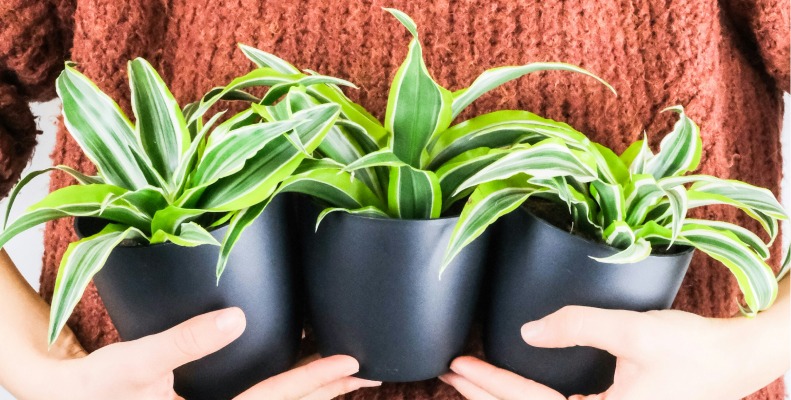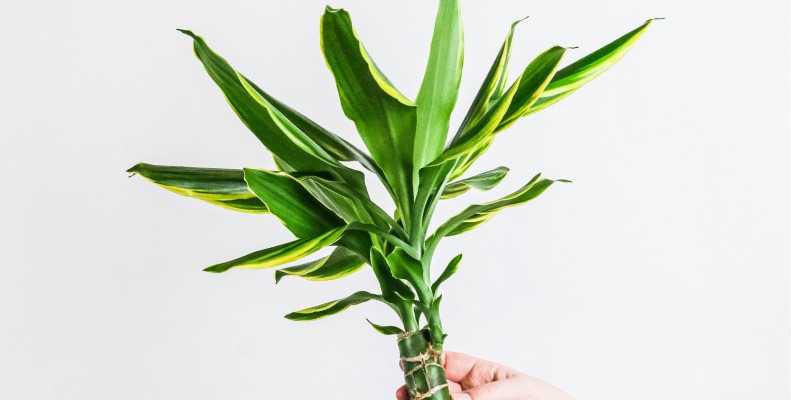Welcome to your full guide on corn plant care inside! It’s known as Dracaena fragrans and comes from Africa’s tropics. It looks like a palm tree and makes rooms more elegant. We’ll talk about watering, light, soil, air, food, trimming, making new plants, and health problems. Stick with our advice, and your corn plant will do well, making your home nicer.
Key Takeaways:
- Provide bright, indirect light for your corn plant and protect it from direct sunlight.
- Maintain a temperature range of 60°F to 75°F for optimal growth.
- Use well-draining soil that is rich in organic matter.
- Keep the soil evenly moist during the growing season and reduce watering in the late fall to winter.
- Maintain a humidity level of 40 to 50 percent to mimic the plant’s tropical environment.
- Fertilize regularly during the growing season with a balanced liquid fertilizer.
- Prune yellowing leaves and control the plant’s height through pruning.
- Propagate your corn plant through stem cuttings in water or directly in moist peat moss.
- Monitor for common pests and diseases and treat them promptly.
Choosing the Right Growing Conditions
Corn plants, also known as Dracaena fragrans, thrive in indoor conditions like the tropics. You can keep your corn plant healthy and beautiful by setting up the right space.
Corn plants love bright, indirect light. Place them where they’ll get filtered light all day but won’t be in direct sun. By a window with sheer curtains or using sheers to spread the light, you can make a perfect spot.
They do well in temperatures between 60°F and 75°F. Avoid cold drafts and big temperature changes to keep them happy.
For the soil, it should drain well and be full of organic stuff. Mix perlite or sand into a general potting mix for corn plants. Make sure the pot can drain to avoid too much water.
It’s key to make a good home for your corn plant indoors. With enough light, the right temperature, and good soil, your plant will thrive.
Ideal Conditions for Corn Plant Care
| Aspect | Ideal Condition |
|---|---|
| Light | Bright, indirect light |
| Temperature | 60°F to 75°F |
| Soil | Well-draining and rich in organic matter |
Watering and Humidity Requirements
It’s key to water and keep the air moist for your corn plants to be happy and healthy. Enough water and the right amount of humidity help them grow strong.
Watering
Keep your corn plant’s soil just right when it’s growing fast, usually in spring to fall. Don’t water too much, though. Too wet can harm them by causing root rot.
But, in late fall and winter, they need less water because they’re not growing much. Be careful not to let the soil get totally dry. This could stress your plant.
Humidity
Corn plants do best with humidity at 40 to 50 percent. This is like the humid places they come from. It keeps their leaves from drying or turning brown.
Adding a humidifier to the plant’s room can make the air just right. This is a good way to help your corn plant grow well.
Another way is to put the plant’s pot on a tray with water and pebbles. Water evaporating from the tray will add moisture to the air. Just be sure the pot doesn’t touch the water to keep the soil healthy.
Always remember to keep the water and humidity levels correct for your corn plant. Do this, and you’ll create a great home for your plant to flourish.

Fertilizing, Pruning, and Propagation
Corn plants need good food to grow well. It’s best to give them food every two to four weeks in the growing season. Dilute a strong liquid fertilizer and read the label before using. Make sure the soil is wet before feeding them. Too much food can harm them. So, do not give more than what the label says.
Trimming is key for healthy corn plants. Look for leaves that are yellow or damaged. Cut these off at the bottom with clean shears. Trimming makes the plant look better and stops diseases. It also keeps the plant from getting too tall indoors.
To make more corn plants, you can use the stems. Pick a strong stem and cut it under a leaf. Put this in a glass of water and change the water often. This makes roots grow. When the roots are long, put this in a pot with soil. Soon, you will have a new corn plant.
Propagation in Water
| Steps | Instructions |
|---|---|
| Step 1 | Select a healthy stem and cut it just below a leaf node. |
| Step 2 | Place the cutting in a glass of water, ensuring that the node is submerged. |
| Step 3 | Change the water every few days to prevent rot. |
| Step 4 | After a few weeks, roots should start to form. |
| Step 5 | Transfer the cutting to a pot with moistened peat moss or well-draining potting mix. |
Planting in dirt is also easy. Just stick a cutting into soil. Make sure a leaf node is under the soil. Keep it wet and warm. New roots will grow in a few weeks.
Keep feeding, trimming, and growing new corn plants. With care, your plant will keep growing. Enjoy the green life it brings to your home.
Conclusion
Proper care is key for corn plants to grow well. With a few easy steps, your corn plant will be healthy and make your home look great.
To start, watch how much you water. The soil should be moist, not wet. Too much or too little water makes leaves turn yellow or brown. Change how often you water in winter.
Next, make sure they get the right light. Corn plants like bright, indirect light. Direct sunlight can burn their leaves. This keeps them looking vibrant and green.
Finally, think about the air’s moisture. Corn plants like a bit of humidity, between 40 and 50 percent. Place a pot on a water and pebbles tray or use a humidifier. This stops dry air from hurting your plant.
Stick to these tips and deal with any pest or disease problems quickly. Soon, you’ll have a lovely corn plant at home.

